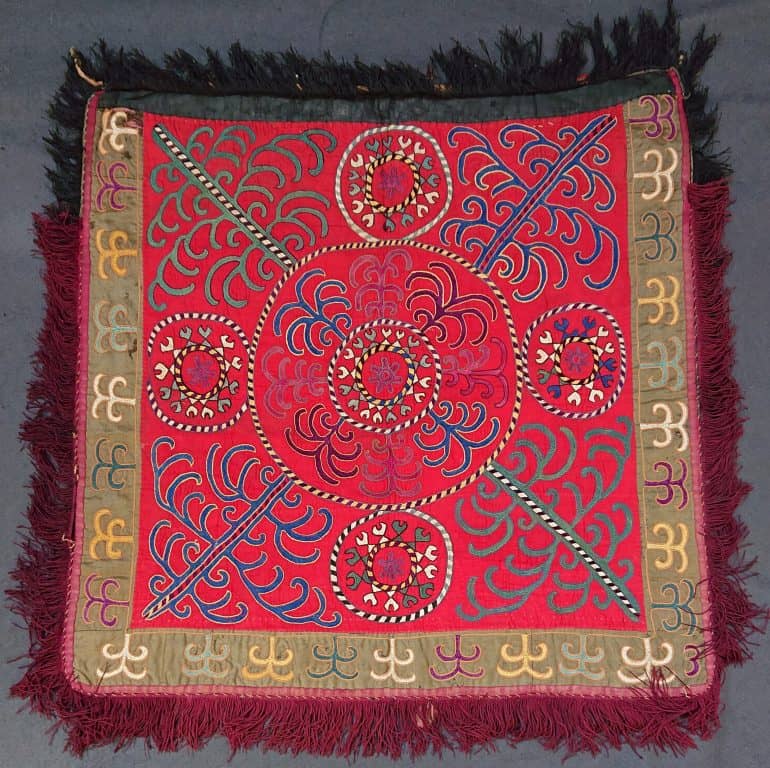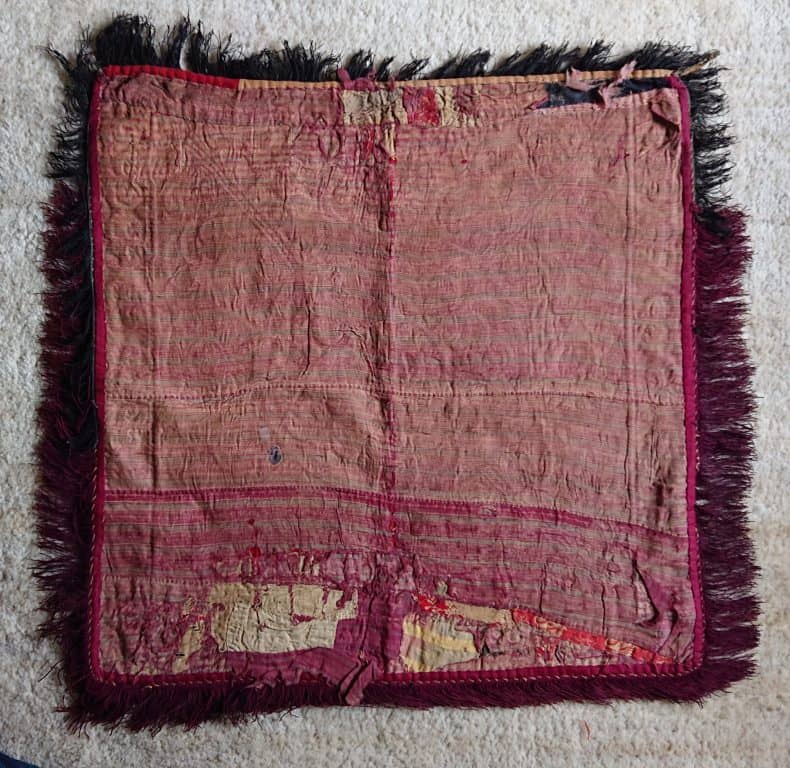Antique Lakai Hanging (Ilgich)
SOLD
Antique Lakai Hanging (Ilgich)
reference:
7052
dimensions:
70 x 72 cm (excluding fringes)
Description
This antique Lakai hanging, or ilgich, dates to the early 20th century. It is a silk embroidery on a cotton ground, with the original silk backing.
The Lakai were a steppe tribe concentrated mostly on the northern bank of the Amu Darya in what is now southeastern Uzbekistan and southern Tajikistan. They still form a sizeable minority in those two states. Their dwellings were yurts (up to the 1920s), and the focus of their economic activities were horses, but sheep herding was also important. They operated a bartering system with neighbouring tribes, who all had slightly different specializations, and an important part of this were the embroideries produced by Lakai women.
These embroideries must be seen in the context of the yurt: they were used to decorate the stack of bedding, blankets and quilts against the wall behind the place of honour, or tor, opposite the entrance to the yurt, but also to decorate the lattice of the walls and sometimes, in the case of larger pieces, as “room” dividers. And they provided an additional source of income or were used in bartering.
Lakai embroideries are most commonly on a red background; this was fairly coarse, hand woven wool dyed with dye stuffs derived from the madder root in the earlier pieces, and machine made cotton, though still red, in the later textiles.
The piece in hand is a typical example: almost completely square in size, the bold colours and designs of the silk embroidery speak of a proud tradition. The embroidery is worked in chain stitch for the outlines and slanted buttonhole stitch for the areas.
The designs of this at torba ilgich, which is a term applied to a square without a flap at the top (see Fitz Gibbon, Kate & Andrew Hale, Uzbek Embroidery in the Nomadic Tradition. The Jack A. and Aviva Robinson Collection at the Minneapolis Institute of Arts. Minneapolis 2007, p. 199) follows a familiar format: a central circle is surrounded by four further elements. Plant structures form the diagonals from the centre into the corners. A green border with a very simple repeat of stylized plants (?) encloses the field on three sides, and tassels surround the whole textile. These ilgich served a purely decorative purpose inside the yurt.
The embroidery is in very good condition. The backing has some old repairs (see the additional image).
SOLD


